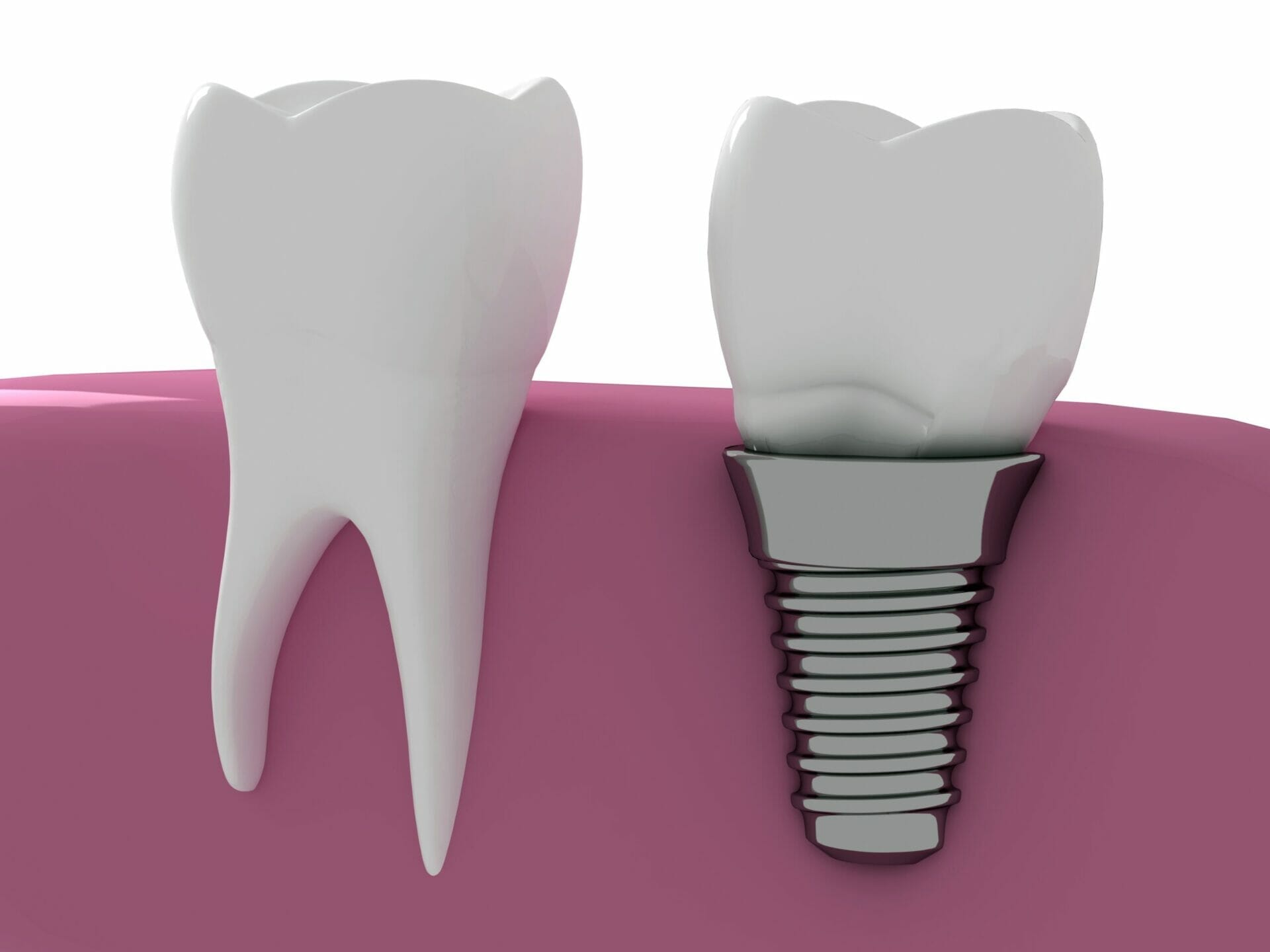
"How do dental implants work?". This is a very common question that we get at the office. Intense marketing efforts have made most people in North America aware of dental implants and many of these people understand that dental implants can replace one or more missing teeth. However, only a small proportion of patients have a sound understanding as to how the implants work. What parts are involved and how many parts are there? Do I get my implant-tooth right away or are there phases to the whole process?
Well, nobody expects that the average patient would know all of the answers. After all, that's a big part of what Dentists are for! So, take some time with this article and I hope that it can give you a better idea about what you can expect from a dental implant.
When a patient asks "how do dental implants work?", we start by discussing their component parts. So, I will first chat a bit about the parts that make up an implant-crown or "implant-tooth". Then, in my next section I will discuss installation of parts and treatment timeline.
A dental implant-crown is the full functional unit that allows you to chew food. The dental implant on it's own is simply a surgical titanium screw within the jaw. A Dentist places the implant screw as the foundation for the crown or "tooth" portion that you use to chew. After placing the implant screw, your Dentist allows healing of 3-4 months typically before connecting a crown or tooth to the implant.
There is commonly an adapter or "abutment" that enables connection of the crown to the implant. So, generally, there are 3 parts to a dental implant-crown.
The first step in replacing your missing tooth is the placement of an implant screw. After this, it takes 3-4 months for your jawbone to heal around the implant tightly. Once healing is finished, your Dentist takes an impression of the top of the implant and surrounding gums. A Dental Laboratory uses the impression to make your abutment as well as your crown. Start to finish, this can take between 4-5 months total before you have an actual tooth replacement.
In some cases, bone grafting is necessary and this adds a step to the whole process. Once your Dentist grafts bone where your implant will eventually be, you need that graft to heal. So, you can expect this to add about 4-5 months of treatment time to the implant-crown process. When your Dentist requires bone grafting as a pre-prosthetic procedure, the total treatment time can be 10-12 months.
Once your Dentist receives the crown from your local Dental Lab, he/she can finish the process. Specifically, your Dentist will take an abutment or adapter, and screw it onto the top of the implant. Next, they will install your crown. This can be done by placing a screw through the abutment and threading it into the implant itself. Alternately, your Dentist can cement the crown to the abutment (which is screwed into the implant). Sound tricky? Don't worry, it's not.
Once your implant-crown is installed, you can maintain it with proper brushing and vigilant flossing, just as you would maintain a natural tooth. Your dental implant crown will not be as shock-absorbent as a natural tooth (which has a root surrounded by soft ligament tissue) so remember not to load it excessively with hard foods. This can weaken your dental implant over time.
If you would like to read more about Dental Implants, please explore helpful content from the American Academy of Implant Dentistry, here.
Thank you for reading!
Give us a call at (519) 576-8160 or request a consult with me here. We are centrally located in downtown Kitchener and provide dentistry to Kitchener, Waterloo, Cambridge, Breslau and surrounding areas.
This article is intended to promote understanding of and knowledge about general oral health topics. It is not intended to be a substitute for professional advice, diagnosis or treatment. Always seek the advice of your Kitchener Dentist or other qualified healthcare provider with any questions you may have regarding a dental condition or treatment.
Services
Routine Dentistry & Tooth Repair
Oral Surgery & Tooth Removal
Prosthetic Dentistry & Tooth Replacement
Protective/Preventive Services
Teeth Whitening
Schedule an Appointment Now
